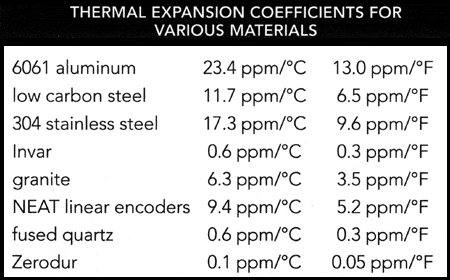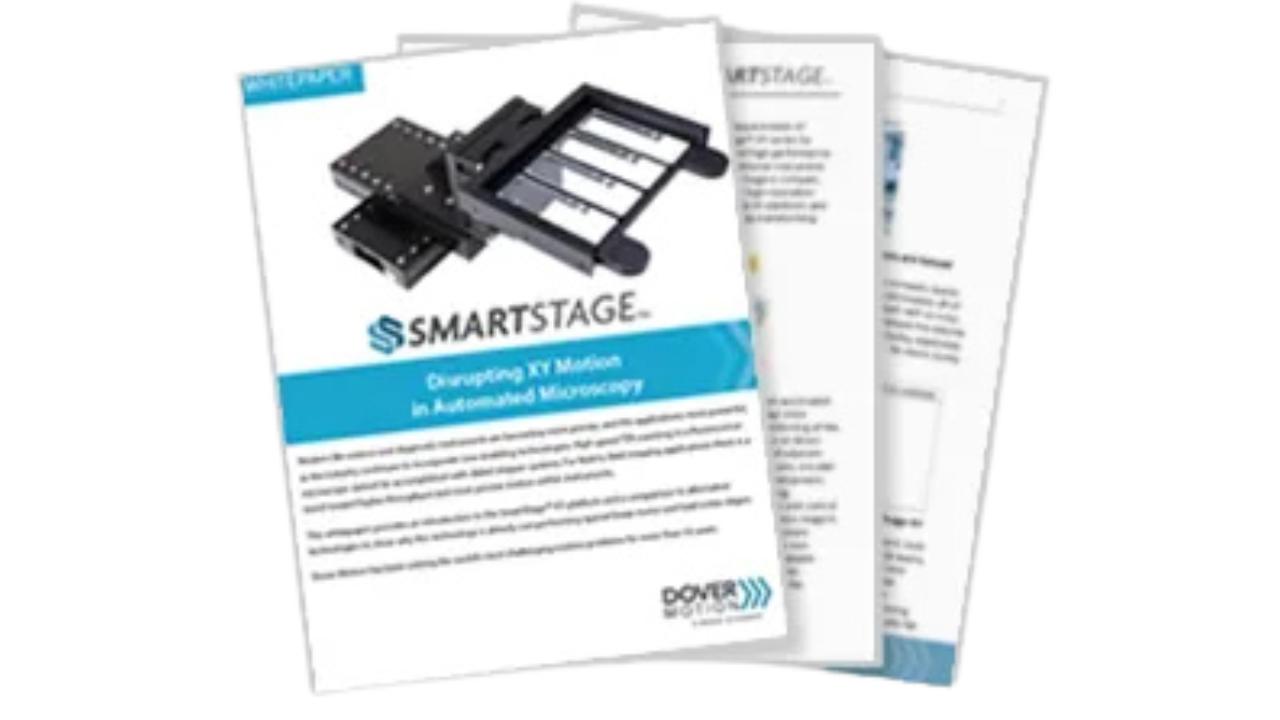Thermal Expansion
Thermal expansion poses significant constraints on the accuracy achievable in positioning applications.
It becomes increasingly important as the table travel is increased. Ambient temperature changes are one obvious source of thermal expansion. As the positioning table warms, its constituent parts undergo expansion, at a specific rate for any material. Accordingly, to permit any two users to agree on what constitutes an “accurate” positioning system, all critical dimensional measurements world-wide are understood to take place at 20 degrees C (68 degrees F). Measurements performed at other than 20 degrees C must be corrected to their 20 degree C value, using the thermal expansion coefficient for the material being tested. Leadscrews, fabricated from stainless or low carbon steel, expand at a rate of 12 parts per million per degree C, while the aluminum stage body expands at 23 ppm/degree C. Mechanical stress due to the differential between these two expansion rates is eliminated by the design of DOVER positioning tables, which captivates one end of the leadscrew using a duplex, angular contact bearing set, while allowing the other end to slide freely through a bearing providing only radial support.
The leadcrew is the principal accuracy determining element of many positioning systems. At 12 ppm/degree C, a 3 degree change in ambient temperature will result in an expansion of 36 ppm, and amounts to about 7 microns for a 200 mm travel stage. A one meter long leadscrew would experience a total expansion five times as great, or 36 microns. In some cases, ambient temperature can be easily regulated, while in others, it may be possible to simply measure the temperature and calculate a compensation value. An additional source of thermal expansion, however, is less easily avoided. As the leadscrew spins within the nut, it experiences a friction induced heating which can easily exceed ambient temperature changes. For example, to achieve 250 mm per second translational velocities with a 5 mm leadscrew requires that the screw rotate at 3000 rpm. Any screw/nut combination (including ball screws) which is designed to provide very high repeatability will have some level of frictional torque. At the torque of our standard anti-backlash nut, the leadscrew will experience an 8 degree C temperature rise at this speed, resulting in 10 microns of thermal expansion for every 100 mm of screw length. This amounts to 20 and 100 microns for the preceding 200 mm and one meter examples, respectively. This expansion is also hard to correct; it builds over a 5-10 minute period as the leadscrew gradually warms, and may grow and shrink as the duty cycle of the application varies. Motor heating may also superimpose an additional thermal profile across a positioning table, and can elevate leadscrew temperature. Shutting motor current down to an idle level while not moving can reduce this effect.
Note that the expansion is measured from the stationary (duplex bearing) end of the leadscrew; in DOVER positioning tables, interpolated or otherwise, this has been located at the table end opposite the motor, to facilitate leadscrew assembly and removal. Thermal expansion often sets a reasonable “upper limit” on the accuracy with which leadscrews should be specified. If the system is to be operated open loop, there is no point in paying for leadscrew accuracy in excess of the expected thermal expansion. If, on the other hand, linear encoders are used (as described below), then leadscrew accuracy becomes even less relevant.
Use of a linear encoder to determine position, using either a servo control or “quasi-closed loop control” with a stepping motor, will obviate any leadscrew induced thermal (and other) errors. Since encoders generate negligible heat as the read head moves over the glass scale, friction induced heating can be ignored. DOVER linear encoders have a thermal expansion coefficient of ~10 ppm/degree C. To avoid the introduction of errors due to thermal expansion, ambient temperature must be carefully controlled.
Alloys are available (eg., Invar) with much lower thermal expansion coefficients at room temperature. The difficulty and cost of fabricating stage components from these materials, however, generally favors the use of other techniques to minimize error (typically, the use of linear encoders and/or tight temperature regulation, and laser interferometers). Thermal expansion can become a significant error source in very high accuracy systems, which will typically employ laser interferometers. In this case, the user’s part, the positioning table components between the user’s part and the retroreflector or plane mirror, the base plate between the table and the polarizing beamsplitter, and the interferometer optics themselves are all subject to thermal expansion and its resulting inaccuracy.


